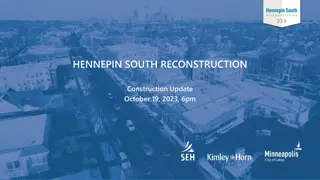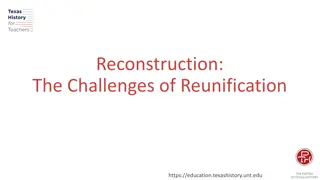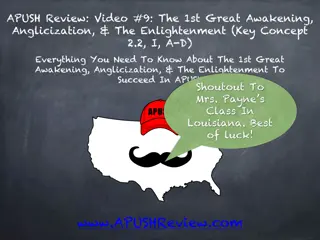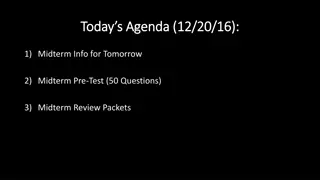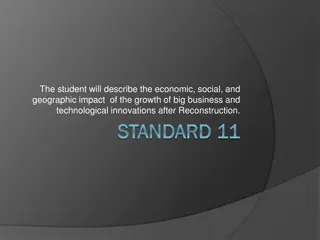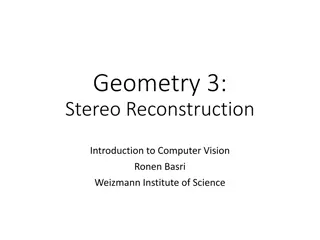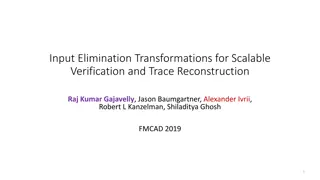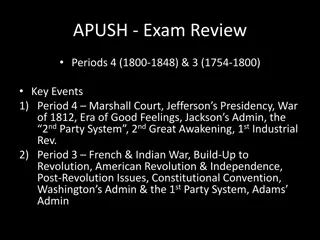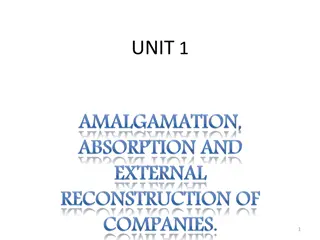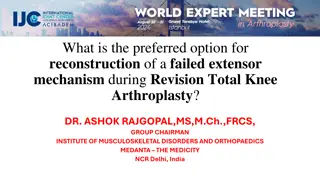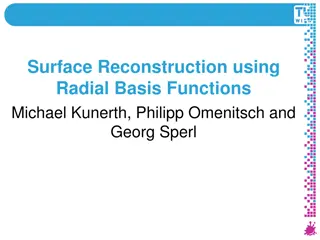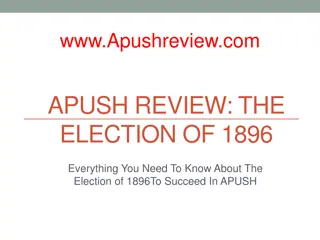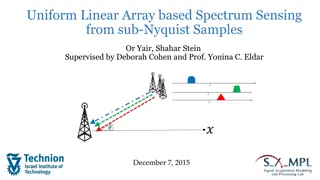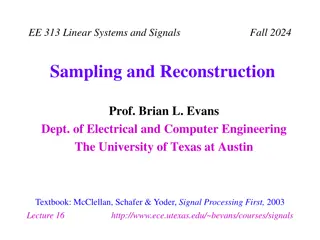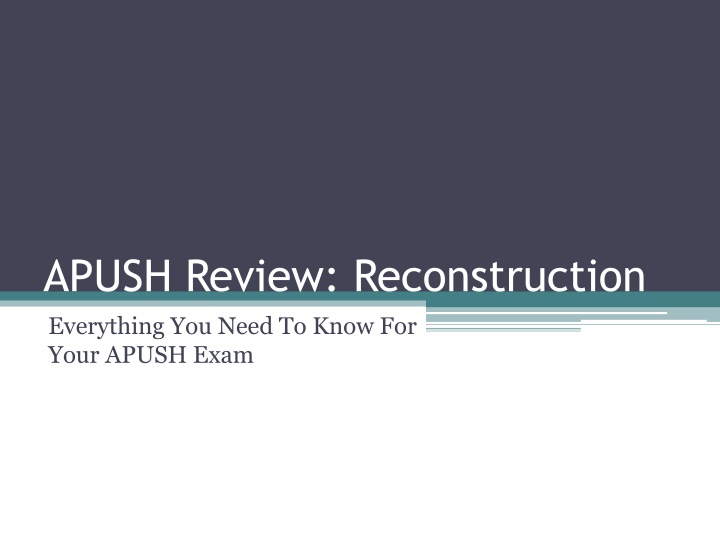
APUSH Review: Reconstruction Summary & Key Amendments
Explore the essentials of Reconstruction post-Civil War in this APUSH review. Learn about Lincoln vs. Congressional Reconstruction, President Johnson's plan, Radical Reconstruction, Freedmen's Bureau, and key amendments like the 13th, 14th, and 15th. Dive into the dynamics of this crucial period in American history.
Download Presentation

Please find below an Image/Link to download the presentation.
The content on the website is provided AS IS for your information and personal use only. It may not be sold, licensed, or shared on other websites without obtaining consent from the author. If you encounter any issues during the download, it is possible that the publisher has removed the file from their server.
You are allowed to download the files provided on this website for personal or commercial use, subject to the condition that they are used lawfully. All files are the property of their respective owners.
The content on the website is provided AS IS for your information and personal use only. It may not be sold, licensed, or shared on other websites without obtaining consent from the author.
E N D
Presentation Transcript
APUSH Review: Reconstruction Everything You Need To Know For Your APUSH Exam
Reconstruction: An Intro What was it? Attempting to achieve national unification after the Civil War Key questions regarding Reconstruction: Who would control it? Congress? President? How would South be treated?
Lincoln vs. Congressional Reconstruction Lincoln: Favorable to the South Lincoln s 10% Plan: If 10% of voters in 1860 election pledged loyalty to US, state could be readmitted Congress felt it was too lenient Wade-Davis Bill: Congress (Republicans) sought 50% of voters in 1860 election to pledge allegiance Pocket-vetoed by Lincoln
President Johnson His Reconstruction Plan was similar to Lincoln 10% Ratification of the 13thAmendment Confederates could appeal to him for a pardon Disliked by Radical Republicans Johnson was a Democrat from the South Impeached for violating Tenure of Office Act Secretary of War Stanton Johnson was not removed
Why did Radical Reconstruction occur? Congress (Republicans) wanted to maintain their power 2 key Congressmen: Thaddeus Stevens and Charles Sumner Former Confederate officials ran for federal office Former CSA VP Alexander Stevens Black Codes Regulated affairs of freedmen; conditions similar to slavery South was divided into 5 military zones
Freedmens Bureau Goal: Help former slaves survive and adjust Food, medicine, and clothing were provided to former slaves and poor whites Promised 40 Acres and a Mule Rarely happened Biggest Success of the Freedmen s Bureau? EDUCATION!
Key Reconstruction Amendments and Terms 13thAmendment: Made slavery illegal 14thAmendment: Granted citizenship to blacks Equal protection for citizens Former Confederate officers could not hold state or federal office 15thAmendment: Granted suffrage for blacks South found loopholes: poll taxes, literacy tests, etc. Scalawags: Southerners that favored Reconstruction Carpetbaggers: Northerners that moved South during Reconstruction Force Acts: Passed in response to KKK, Federal troops used to quell KKK
End of Reconstruction Why did it end? Compromise of 1877 The compromise settled the disputed 1876 election Hayes (Republican) became President ENDED MILITARY RULE IN THE SOUTH! Southerner appointed to cabinet Impact of end of Reconstruction? Jim Crow Laws Upheld by Plessy v. Ferguson Disenfranchisement for blacks
Thanks for watching! Subscribe to my channel Help spread the word Good luck on your tests! I m representing Cincinnati!


